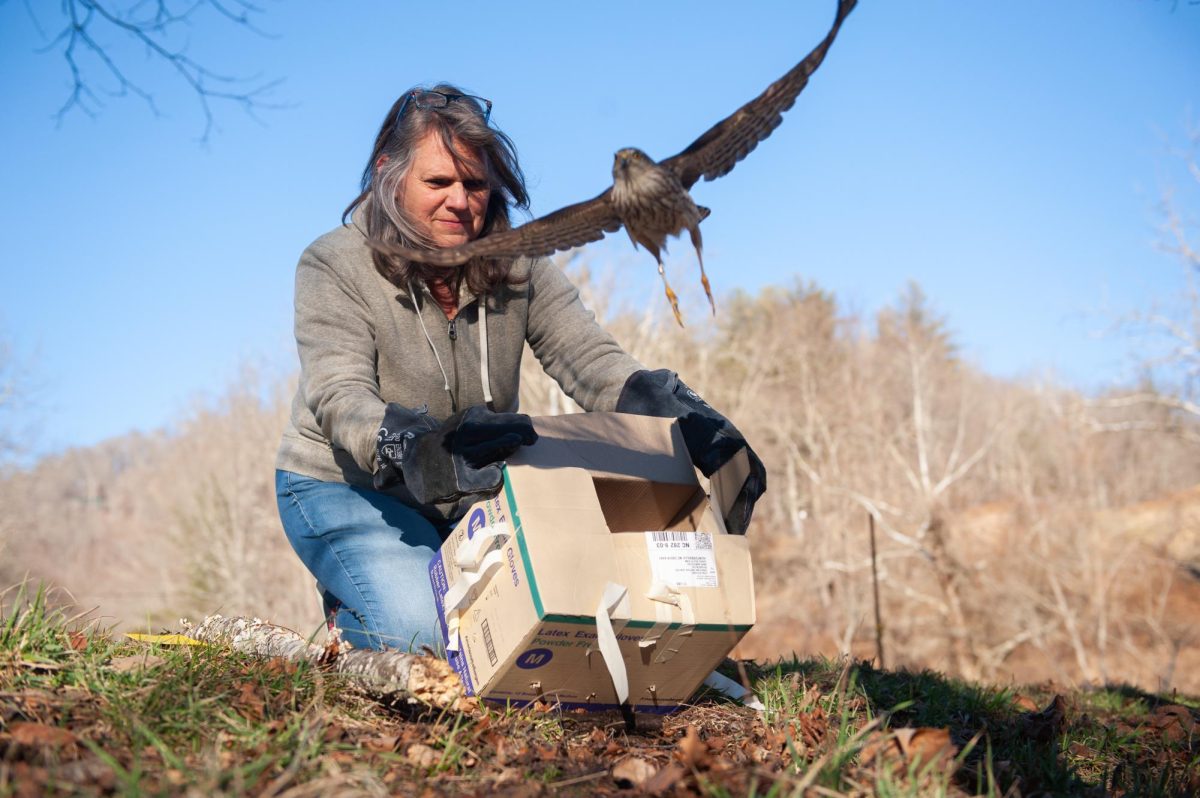Since October of 2014, the Appalachian Wildlife Refuge has been dedicated to the conservation and preservation of wildlife local to Western North Carolina. Composed of passionate volunteers with a genuine desire to help rehabilitate local animals, the Appalachian Wildlife Rescue aims to protect and improve the quality of life of often defenseless wildlife.
Four years after forming an alliance of volunteers and actively bettering the environment, the AWR was able to officially open their rehabilitation facility in Candler. Appalachian Wildlife Refuge is a nonprofit organization that relies heavily on volunteer action and donations.
Abbie Stabosz, a senior at UNC Asheville, preparing to graduate this spring with an environmental science degree, concentrating in ecology. She heard about the work being done by the Appalachian Wildlife Refuge through her academic advisor after inquiring about local volunteer opportunities for ecology students, and has been volunteering with the AWR since fall of 2022.
Stabosz is currently involved in a second internship with the organization.
“We do lots of husbandry, which includes things like cleaning animal enclosures, doing laundry, making meals and feeding the animals, providing enrichment and sometimes giving medications,” Stabosz said in regards to the typical daily tasks for interns and some volunteers. “We also help a lot with the construction and deconstruction of different types of enclosures.”
Nancy Vergara is the volunteer program coordinator for the AWR, and is also a licensed wildlife rehabilitator.
“As the volunteer program coordinator, my main task is to get volunteers and interns interested in helping give our patients a chance at life in the wild again, and to help give a voice to our native wildlife,” Vergara said. “It can be by working directly at our facility, or helping with outreach and development.”
Vergara speaks on her personal passion for animals.
“I specialize in Eastern Cottontail Rabbits and work with 250-300 rabbits each year and love it,” Vergara said. “ Not many rehabbers want to work with rabbits due to the multiple challenges, but I truly enjoy working with them.”
The refuge center is composed of volunteers and interns from a variety of different backgrounds.
“Most of the interns have been biology or environmental science majors, or are pursuing veterinary medicine,” said Stabosz. “However, the volunteers we get come from all sorts of backgrounds. We have a lot of people who are retired, some who have full time jobs in completely unrelated fields and high school students who are getting a feel for this kind of work.”
The AWR website features direct links to donate to the rehabilitation center’s efforts as well as specific, detailed instructions on what steps to take if you have encountered an orphaned or injured animal.
“I try to educate people on how to coexist with the wildlife around us and how to enjoy having them on your property,” Vergara said.
The Appalachian Wildlife Refuge’s website contributors state that donations to the organization are directly administered towards providing life-saving medical care, supplies and food.
“If you want to learn more about the organization, visit the website for Appalachian Wildlife Refuge or watch our feature on the Today Show on YouTube,” Stabosz said.


















